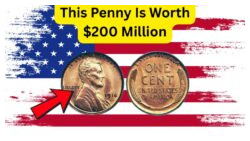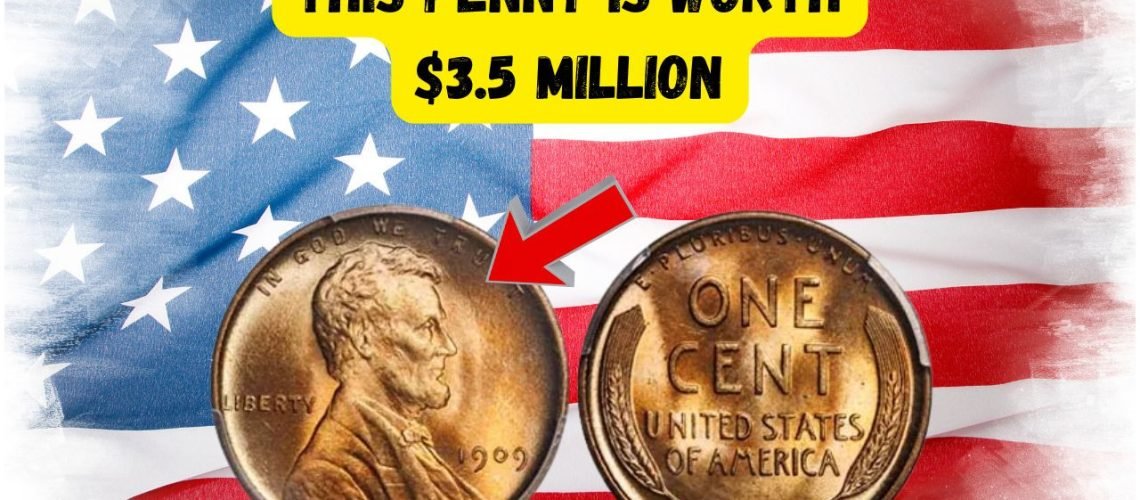Lincoln Wheat Penny: The allure of coin collecting lies not just in the aesthetic and historical value of coins but also in the potential for rare finds that could be worth a fortune. Imagine holding a piece of history that is not only a testament to a bygone era but also a potential jackpot. Such is the case with the elusive $3.5 million Lincoln Wheat Penny. This legendary coin has spurred countless treasure hunts and remains a subject of fascination for numismatists and amateur collectors alike.
Table of Contents
Toggle
Understanding the Lincoln Wheat Penny
The Lincoln Wheat Penny, introduced in 1909, was a groundbreaking coin that featured President Abraham Lincoln’s profile on the obverse side. Its reverse showcased two wheat stalks, symbolizing prosperity. This coin was minted until 1958, and during this time, several rare versions emerged, attracting collectors’ attention. The rarity and value of these coins are often due to limited minting, errors during production, or their historical context, making them particularly sought after in the numismatic community.
- The first Lincoln Wheat Penny was minted in 1909.
- It was the first U.S. coin to feature a president’s portrait.
- The coin’s reverse design includes two wheat stalks.
- Production continued until 1958.
- Rare variations have become highly valuable over time.
Why is the 1943 Copper Penny So Special?
Among the Lincoln Wheat Pennies, the 1943 Copper Penny stands out due to its accidental creation. During World War II, copper was a valuable resource for military use, leading to the minting of pennies in steel coated with zinc. However, a few copper blanks from the previous year were inadvertently used in 1943, resulting in a small number of copper pennies being produced. These pennies are exceptionally rare and considered the holy grail for collectors because of their accidental and limited production.
| Year | Composition |
|---|---|
| 1909-1942 | Copper |
| 1943 | Steel with Zinc Coating |
| 1944-1958 | Copper |
| 1943 (Error) | Copper |
How to Identify a $3.5 Million Penny
Identifying a potentially valuable Lincoln Wheat Penny requires keen observation and knowledge. The 1943 Copper Penny is distinguishable by its color and weight. Unlike its steel counterparts, the copper penny will not be attracted to a magnet. Additionally, examining the coin’s features, such as mint marks and possible errors, is crucial in determining its authenticity and potential value.

Discover the Lincoln Wheat Penny Worth $200 Million Still in Circulation
- Check the coin’s weight; copper pennies are heavier than steel ones.
- Use a magnet to test if the penny is steel or copper.
- Look for mint marks and other unique features.
- Consult with a numismatic expert for authentication.
The Role of Mint Marks in Collecting
Mint marks play a vital role in a coin’s value and collectibility. These small letters indicate where a coin was minted, with some mints producing fewer coins, thus increasing their rarity. For Lincoln Wheat Pennies, the presence or absence of a mint mark can significantly affect its desirability and worth. Collectors often seek coins with mint marks from less common locations, as these are generally scarcer and potentially more valuable.
| Mint | Location | Mint Mark | Years Active |
|---|---|---|---|
| Philadelphia | Pennsylvania | No mark | 1909-present |
| Denver | Colorado | D | 1906-present |
| San Francisco | California | S | 1854-1955 |
| West Point | New York | W | 1973-present |
Tips for Coin Collectors
For aspiring coin collectors, diving into the world of rare pennies can be both exciting and overwhelming. It is essential to approach this hobby with patience and a willingness to learn. Here are a few tips to get started:
- Start by learning about common coins and their histories.
- Invest in a good magnifying glass and other tools for examination.
- Join online forums and local coin clubs to connect with other collectors.
- Stay informed about market trends and auction results.
- Consider attending coin shows and auctions for firsthand experience.
Preserving the Value of Your Collection
| Method | Description | Pros | Cons |
|---|---|---|---|
| Coin Albums | Albums with slots for coins | Organized, easy access | Space-consuming |
| Coin Holders | Individual holders for coins | Protective, display-friendly | Can be costly |
| Storage Boxes | Boxes for bulk storage | Space-efficient | Less protection for individual coins |
Evaluating the Market for Rare Pennies
Understanding the market dynamics for rare pennies is essential for any serious collector. Market conditions can vary significantly based on factors such as economic trends, collector interest, and the availability of rare coins. Staying informed about these fluctuations can help collectors make educated decisions about buying or selling. Engaging with experienced collectors and dealers, attending auctions, and following numismatic publications are effective ways to stay updated on market trends.

Could the Lincoln Wheat Penny Worth $1 Billion Be Hiding in Your Change?
- Monitor auction sites for pricing trends.
- Stay informed about economic factors that might impact coin values.
- Network with other collectors and dealers.
- Regularly update yourself with numismatic news.
FAQs About the Lincoln Wheat Penny
What makes the Lincoln Wheat Penny so valuable?
Its historical significance, design, and rare variations, such as the 1943 Copper Penny, contribute to its high value.
How can I tell if I have a rare Lincoln Wheat Penny?
Check for unique features like mint marks, errors, and the year of minting. A magnet test can also help identify the 1943 Copper Penny.
Where can I sell a rare Lincoln Wheat Penny?
You can sell it through online auction sites, numismatic dealers, or coin shows.
Are there any risks in collecting rare coins?
Yes, risks include fluctuating market values and potential for counterfeit coins. Always authenticate your coins with an expert.
How should I store my coin collection?
Use protective holders or albums to prevent damage and maintain the value of your collection.
Disclaimer: This article is written for general informational purposes only. Please get the latest and accurate information from the official website.










